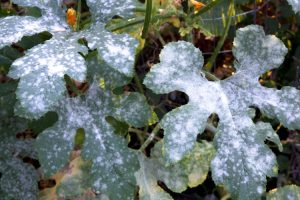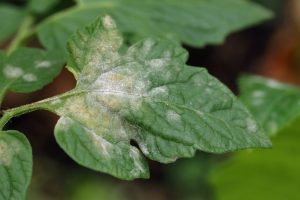There’s nothing more frustrating for a gardener than to watch a vibrant, healthy plant succumb to a disease. But, chances are it will happen to you at one point or another. So, do your best to learn a little bit ahead of time about the most common diseases that affect the plants you’re growing.
Powdery mildew in particular has a wide range of host plants and spreads easily, so it’s a good idea to know the basics in case you come up against this fungal disease. Here’s what you need to know to identify, prevent, and control
powdery mildew before it wreaks havoc on your vegetables!
1. Identification
Powdery mildew is an easily identifiable fungus characterized by white, powdery areas that spread across a plant’s foliage (usually the top side of leaves) and often its flowers as well. On the plus side, powdery mildew is host specific. So, just because one plant becomes infected doesn’t mean neighboring plants will, too.
However, powdery mildew consists of a wide range of species that infect an even wider range of host plants. Every group of plants, from ornamentals to edibles, shrubs to trees, has members that are commonly affected by powdery mildew. Make sure to do some basic research on the plants you choose for your garden to determine which pests and diseases you’re likely to come up against.
Some of the edibles most prone to powdery mildew include squash, cucumber, tomato, Swiss chard, basil, sage, mint, as well as strawberry, raspberry, and blueberry plants.











